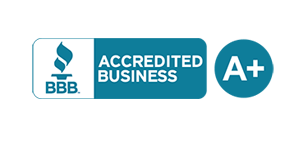Water damage can strike your Gilbert, AZ, home in various forms and severity levels, from minor leaks to devastating floods. Understanding the different categories and classes of water damage can provide valuable insights into the risks and potential consequences of such events. Recognizing the distinctions between clean water, gray water, and black water damage, as well as the four classes of destruction, can help homeowners make informed decisions when addressing water damage-related issues.
In this in-depth article, we’ll explore the various categories and classes of water damage, providing essential information on the potential hazards, health risks, and restoration processes for each. This knowledge will equip Gilbert, AZ, homeowners to effectively assess and manage water damage situations in their homes. Additionally, we will discuss the importance of partnering with a professional water damage restoration company like Emergency Flood Team to ensure a safe and efficient restoration process.
Emergency Flood Team is a trusted provider of water damage restoration services in Gilbert, AZ, with the expertise and resources necessary to address all categories and classes of water damage. Our highly trained technicians are available 24/7 and are committed to restoring your property to its pre-damage condition swiftly and effectively.
Read on to learn more about the various categories and classes of water damage that may impact your Gilbert, AZ, home and how Emergency Flood Team can assist you in navigating these challenging situations with confidence.
Understanding Water Damage Categories
Water damage is divided into three different categories based on the source and cleanliness of the water involved. Recognizing these categories can help homeowners determine each situation’s potential risks and necessary restoration steps.
Category 1: Clean Water
This category refers to water damage caused by clean water sources, such as leaking faucets, broken water supply lines, or failed appliances:
1. Health Risks: Clean water typically poses minimal health risks as it does not contain harmful contaminants.
2. Restoration: Addressing Category 1 water damage involves removing standing water, drying affected areas, and repairing or replacing damaged materials.
3. Potential Escalation: If left untreated, clean water damage can progress to Category 2 or 3 as the water becomes contaminated over time.
Category 2: Gray Water
Gray water damage occurs when water has been contaminated with some level of organic, chemical, or biological substances, making it unsafe:
1. Health Risks: While not as hazardous as black water, gray water still poses considerable health risks due to the presence of contaminants.
2. Restoration: The restoration process for Category 2 damage requires additional safety precautions, such as wearing protective gear and using specialized cleaning and disinfecting techniques.
3. Common Sources: Gray water often results from plumbing leaks, appliance malfunctions, or overflow from sinks, bathtubs, or toilets.
Category 3: Black Water
Black water is the most hazardous form of water damage, containing high levels of harmful contaminants from sources such as sewage or floodwaters:
1. Health Risks: Exposure to black water can cause severe illness or infection due to the presence of pathogens and toxins.
2. Restoration: Addressing Category 3 water damage requires professional expertise and stringent safety measures, including removing and disposing of contaminated materials and thoroughly disinfecting affected areas.
3. Immediate Action: Addressing black water damage immediately is crucial to mitigate health risks and prevent extensive property damage.
Defining Water Damage Classes
Water damage severity is further classified into four classes based on the amount of water involved and the rate of evaporation. Understanding these classes can help homeowners gauge the potential consequences and the necessary restoration timeline.
Class 1: Minimal Damage
This class includes the least amount of water, absorption, and evaporation, typically affecting only a small area or a single room:
1. Rapid Drying: Fast evaporation allows affected materials to dry quickly with minimal interference.
2. Restoration: The restoration process for Class 1 damage typically involves removing any standing water, drying the affected area, and repairing or replacing damaged materials.
Class 2: Moderate Damage
Class 2 water damage involves a more considerable amount of water and absorption, typically affecting an entire room or area:
1. Impacted Materials: This class often results in damage to flooring, walls, and other porous materials.
2. Restoration: Restoration efforts require extracting water, drying the affected areas, replacing damaged materials, and thoroughly cleaning and disinfection.
Class 3: Severe Damage
This class involves the highest amount of water and absorption, with water often infiltrating walls, ceilings, and insulation:
1. Prolonged Exposure: Class 3 water damage usually results from prolonged exposure to moisture or large-scale events, such as natural disasters or burst pipes.
2. Restoration: Addressing Class 3 damage can be extensive and time-consuming, requiring professional assistance to remove water, dry affected areas, and rebuild damaged structures.
Class 4: Specialty Drying Situations
Class 4 damage refers to unique drying situations that involve materials with low permeance, such as hardwood, brick, or concrete:
1. Special Techniques: To effectively remove moisture, addressing Class 4 damage typically requires specialized drying techniques, such as heat injection or desiccant dehumidification.
2. Restoration: Restoring Class 4 damage may involve additional steps, such as the removal and replacement of damaged materials, cleaning and disinfecting surfaces, and closely monitoring the drying process.
Conclusion: Trust Emergency Flood Team for Expert Water Damage Restoration in Gilbert, AZ,
Understanding the various categories and classes of water damage is essential for Gilbert, AZ, homeowners, ensuring informed decision-making and appropriate response to water damage events. By partnering with Emergency Flood Team, you can rely on our expertise and comprehensive services to address any water damage situation safely, effectively, and efficiently.
Emergency Flood Team is committed to providing exceptional water damage restoration services to homeowners in Gilbert, AZ. Our highly trained professionals are available 24/7, prepared to handle all categories and classes of water damage with the utmost care, diligence, and proficiency.
Don’t let water damage disrupt your life—contact Emergency Flood Team for prompt, professional, and reliable water damage restoration in Gilbert, AZ.




















